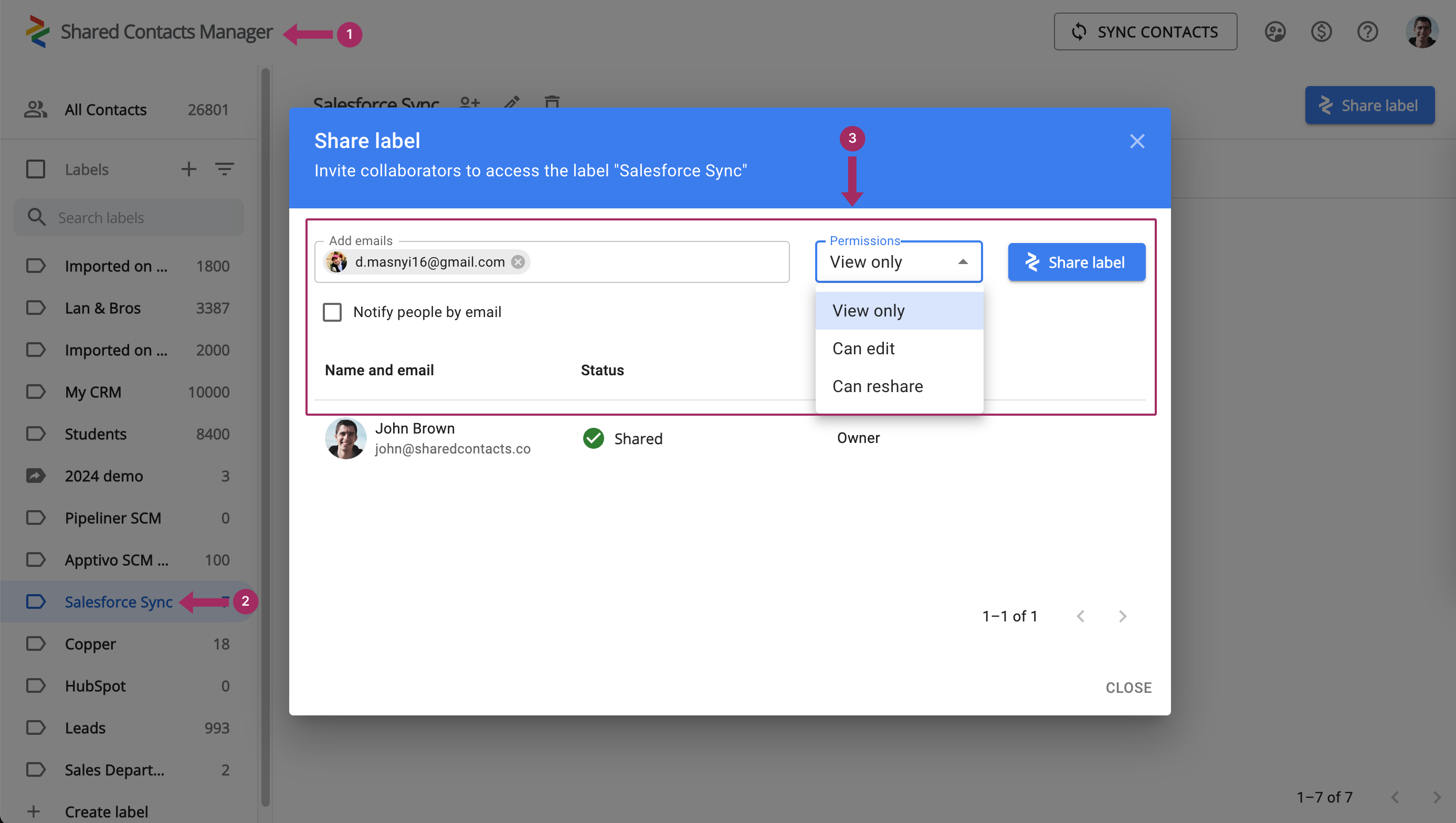What is a Contact List? Everything You Should Know

Contact lists have always existed in one form or another. In ancient times, people used scrolls and papyrus to store important information, and more recently, we stuck phone numbers on fridges to keep track of who to call in an emergency. Today, contact lists are digital tools that store names, phone numbers, emails, and other details, all within easy reach. Having a well-organized contact list is necessary regardless of your purpose – keeping in touch with family and friends – or for business needs like managing clients or networking. Understanding how to structure and share your contacts is key to staying connected and communicating efficiently.
What Is a Contact List?
A person’s name and phone number are already all you need for a basic contact list entry. However, people like to keep a little more information about their associates.
| A contact list is a collection of people’s details, usually including their names, phone numbers, and email addresses. |
Contact lists help you keep track of the people you need to communicate with on personal or business matters. A typical list includes basic information such as:
- Name: the person or organization’s name.
- Phone number: their mobile or landline number.
- Email address: for sending emails or sharing documents.
- Address: physical mailing address, if needed for deliveries or in-person meetings.
- Company name: useful in business to know where the contact works.
- Job title: This can help you keep track of your contact’s role, especially in professional relationships.
- Birthday/Anniversary: these personal touches can help you stay connected on special occasions.
- Notes: Any other details you might want to remember, such as how you met or specific preferences.
All these fields, and perhaps even your custom-created ones, help organize your contacts in a way that makes reaching out easy and efficient.
Functions and Benefits of Contact Lists
In our personal lives, contact lists help us stay connected with friends, family, and essential services like emergency contacts, doctors, kids’ tutors, or electricians. However, when it comes to professional use, they play a much larger and more strategic role.
In business, contact lists are vitally important for managing relationships and setting up effective customer communication. Sales teams rely on them to track leads and prospects, ensuring that every lead or potential customer is followed up with at the right time. Customer support teams use contact lists to access client details quickly, providing fast and personalized service. For professionals who focus on networking, a well-maintained contact list can be the difference between staying connected or losing touch with valuable business contacts.
Beyond day-to-day communication, businesses use contact lists as powerful tools for marketing, lead generation, and customer relationship management (CRM). Organized lists allow companies to segment their contacts into specific groups—such as potential customers, existing clients, or business partners—so they can send personalized messages to each. This targeted approach increases engagement, builds trust, and strengthens customer relationships, and a fine contact list is a fundamental component in successful email campaigns, follow-up on inquiries, and nurturing prospects.
An effective contact list can make a big difference in how smoothly things run, especially in a professional environment. Here are some of the key benefits:
| Increased Productivity | When your contact list is neatly organized, you spend less time searching for information and more time getting things done. |
| Better Communication and Relationship Management | An organized contact list easily takes you to the right person at the right time. It helps you keep track of important interactions, remember key details about each contact, and maintain stronger relationships. |
| Streamlined Workflows and Tasks | You can group contacts by category (e.g., leads, clients, partners) to make it easier to send personalized messages or track interactions. This makes workflows smoother, helping you stay organized and focused on what matters most—building meaningful connections and driving results. |
| Improved Team Communication | Sharing an organized contact list with your team guarantees everyone is on the same page. Tools like Shared Contacts Manager simplify sharing and collaborating on contacts, which means your team can access up-to-date information and reach the right people without delays. This helps avoid miscommunication and improves overall team efficiency. |
| Data Backup and Security | A well-organized contact list can be a reliable backup for all your important contact information. If your phone or device is lost or damaged, you can easily recover your contacts from the cloud or other storage solutions. This prevents the loss of valuable information. |
| Faster Response Times | When you can quickly locate the right contact and their relevant details, your response times improve. This is especially important in customer service and sales, where prompt communication can lead to better outcomes and stronger relationships. |
All these benefits make an organized contact list an indispensable tool for personal and business success. It’s no longer only storing information. Now contact lists make your workflows smoother, communication clearer, and your relationships stronger.
How to Create a Contact List in Google Contacts
Building and maintaining a contact list can be simple if you follow the right steps. Here’s how you can create an organized, up-to-date contact list using tools like Google Contacts.
Let’s start by using a reliable contact management tool. Arguably, Google Contacts is one of the best options for personal and professional use. It allows you to add, edit, and organize contacts in one place. Here’s how you can get started:
- Open Google Contacts: Log in to your Google account and go to the Google Contacts app.
- Add Contacts: Click on “Create Contact” and fill in the details, such as name, phone number, email address, and any other important information.
- Organize with Labels: Use labels to group your contacts (e.g., “Family,” “Clients,” “Vendors”) for easy access later.

How To Share A Contact List
For businesses or teams that need to share contacts, Shared Contacts Manager makes it easy to share and collaborate on contact lists across teams or departments. You can not only add and update contacts like you do in Google, but you can also share contacts easily, providing everyone with different levels of access to the most current information.
- Open the application. If it’s your first time logging in, you need to grant all the required permissions.
- Choose the contact label you want to share and click the Share icon.
- Select the users you want to share the contact label with, set their permissions, and click Share label. The application will then begin syncing your contacts.

Sharing contact lists brings plenty of benefits, especially in a team or business environment. It provides everyone access to the most up-to-date contact information, reducing communication gaps and preventing mistakes. Shared contacts also help speed up workflows by enabling different departments or team members to collaborate more effectively, saving time that would otherwise be spent manually updating or distributing contacts. With proper permission settings, you can control who can view, edit, or manage contacts, assuring total security and accountability.
How to Maintain an Up-to-Date and Clean Contact List
We’ve covered how to create a contact list, and while that’s fairly straightforward, maintaining it—keeping it updated and ensuring the accuracy of the data—can be more challenging and requires ongoing effort. The real value of a contact list isn’t just in having one, but in how organized and up-to-date it is. An effective, well-maintained list directly impacts the efficiency of your work and communication. Here are some tips to help you control the situation:
Stay Up-To-Date
Keeping your contact list clean and up-to-date is a required routine to keep it always useful. To stay on top of things, it’s a good idea to review your contact list regularly and update any changes, such as new phone numbers or email addresses. Setting reminders, perhaps once a month, can help you stay consistent in cleaning up your list. Additionally, if you’re unsure whether certain contact details are still accurate, reach out and verify the information directly. This proactive approach keeps your list organized, and you’ll always have the right details at hand.
Delete Irrelevant Contacts
Removing outdated contacts is just as important as adding new ones. If someone has changed roles, moved companies, or is no longer relevant to your business, consider removing or archiving their contact information to keep your list streamlined and useful. Look for Inactive Contacts. If a contact hasn’t been used in a long time, evaluate if you still need to keep it.
Avoid Duplicates and Organize by Categories
Duplicated contacts clutter your list and make it hard to find the right information quickly. If you sync contacts from multiple sources (e.g., email, phone, or apps), use Google’s built-in Merge & Fix feature to avoid creating duplicates. It helps to merge duplicate entries and clean up your list.

Using labels is also a great idea. Organize your contacts by tagging them with categories or labels, such as “Leads,” “Clients,” or “Suppliers.” This makes it easier to filter and search for specific contacts when needed.
Conclusion
A well-organized contact list can become a powerful tool to improve communication and boost your productivity. By keeping your contacts up-to-date and structured, you’ll make sure you’re always prepared to connect with the right people at the right time.
To get the most out of your contact management, it’s important to implement best practices and use the right tools. Staying on top of your list will save time and reduce the hassle of sorting through outdated information. And if you’re ready to take full control of your contacts, try Shared Contacts Manager for free and discover how easy it is to organize, share, and manage your contacts.



No Comments